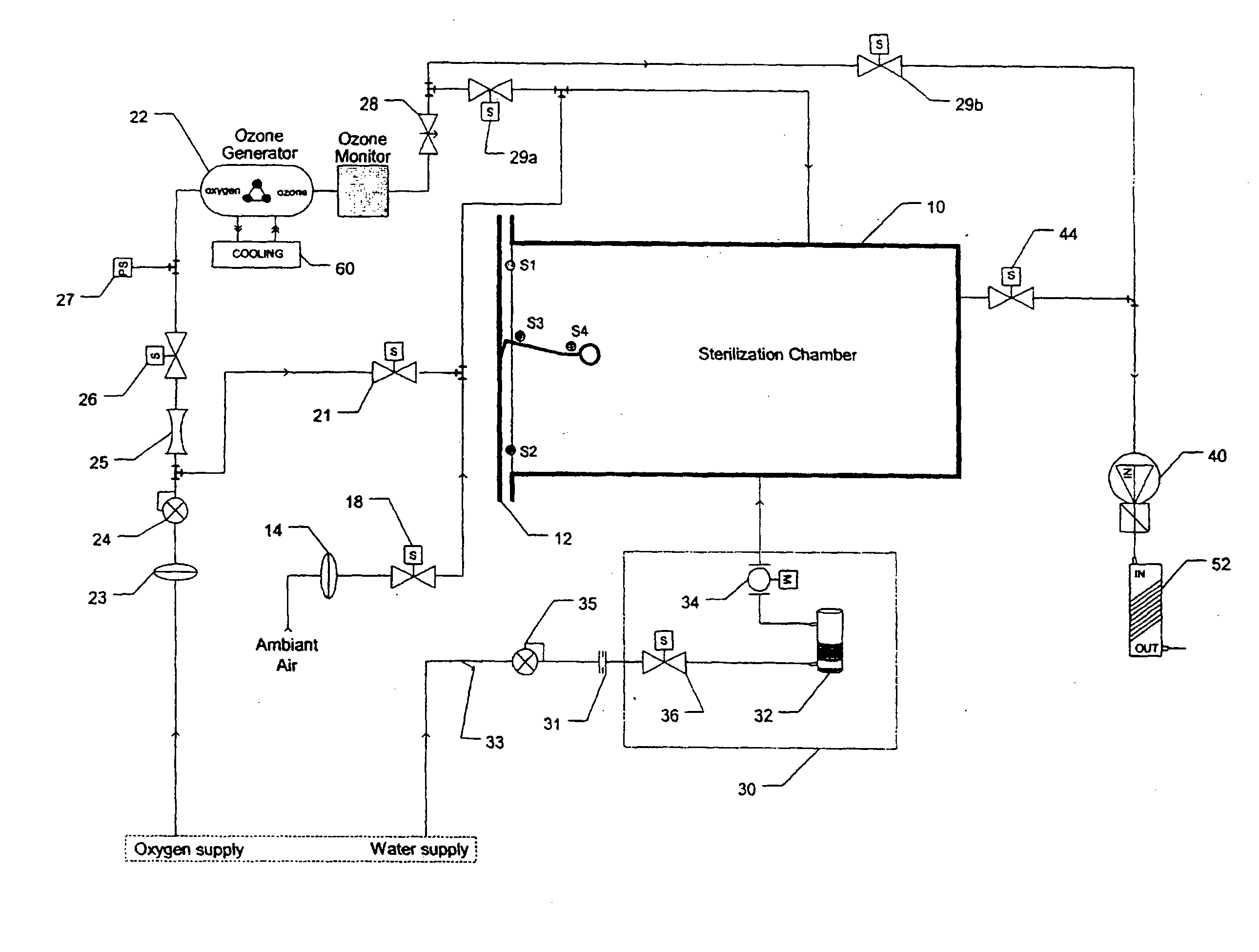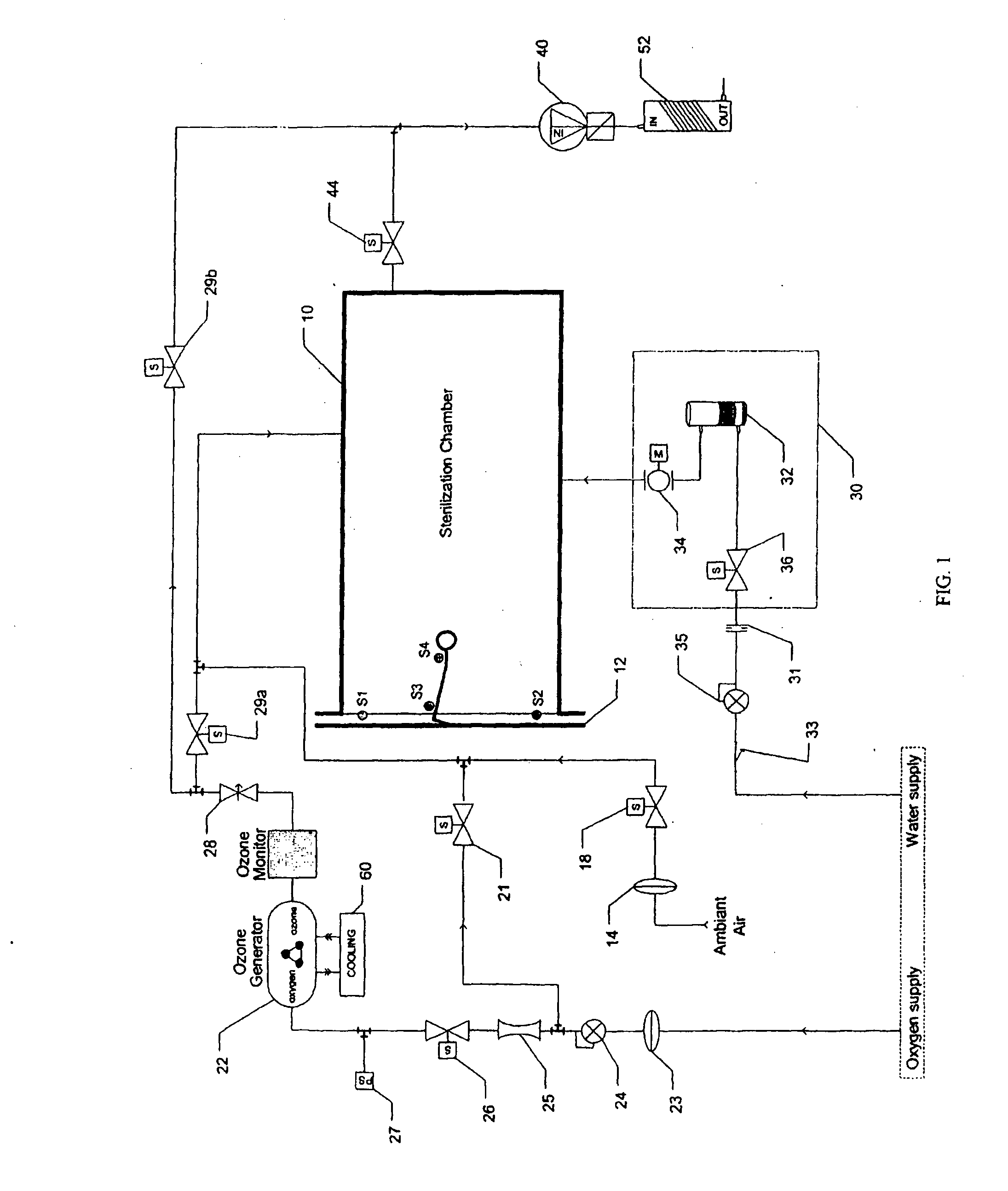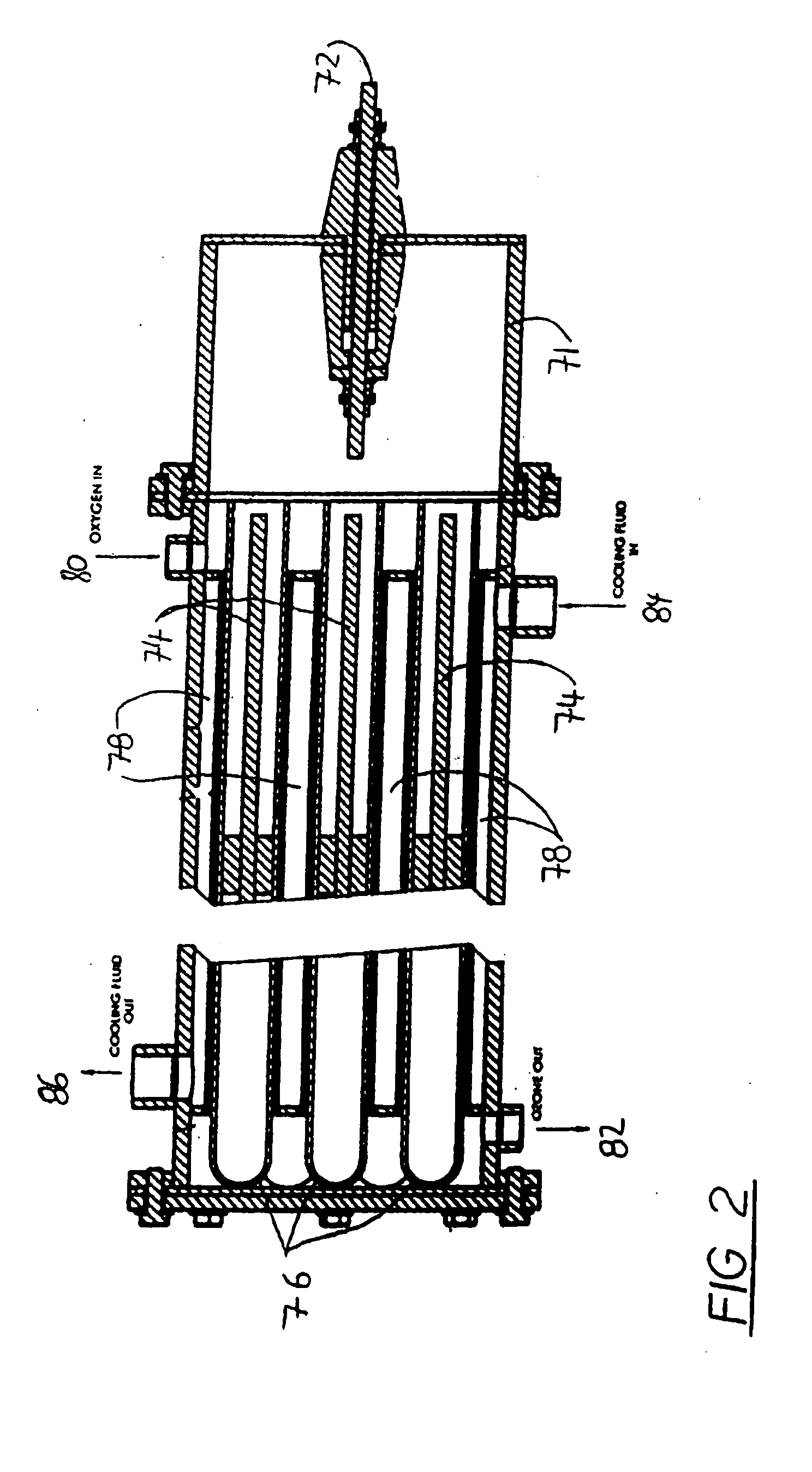Ozonoe sterilizaation process and apparatus
- Summary
- Abstract
- Description
- Claims
- Application Information
AI Technical Summary
Benefits of technology
Problems solved by technology
Method used
Image
Examples
Embodiment Construction
[0041]An ozone sterilizer in accordance with the invention as illustrated schematically in FIG. 1 operates in a relatively simple manner. Medical quality oxygen is subjected in an ozone generator 22 to an electrical field, which converts the oxygen into ozone containing gas. The ozone containing gas is then fed into a humidified sterilization chamber 10 where it sterilizes medical devices. The ozone is subsequently reconverted into oxygen using an ozone catalyst 52. The only residues left at the end of the sterilization cycle are oxygen and clean water vapour.
[0042]Single cycle sterilization with ozone is more efficient and provides for a shorter sterilization cycle than sterilization with EtO and requires few changes in user habits. Moreover, the ozone-based process in accordance with the invention is compatible for use with current packaging, such as sterile pouches and rigid containers. Moreover, the humidified ozone process of the invention provides significantly reduced sterili...
PUM
 Login to View More
Login to View More Abstract
Description
Claims
Application Information
 Login to View More
Login to View More - R&D
- Intellectual Property
- Life Sciences
- Materials
- Tech Scout
- Unparalleled Data Quality
- Higher Quality Content
- 60% Fewer Hallucinations
Browse by: Latest US Patents, China's latest patents, Technical Efficacy Thesaurus, Application Domain, Technology Topic, Popular Technical Reports.
© 2025 PatSnap. All rights reserved.Legal|Privacy policy|Modern Slavery Act Transparency Statement|Sitemap|About US| Contact US: help@patsnap.com



